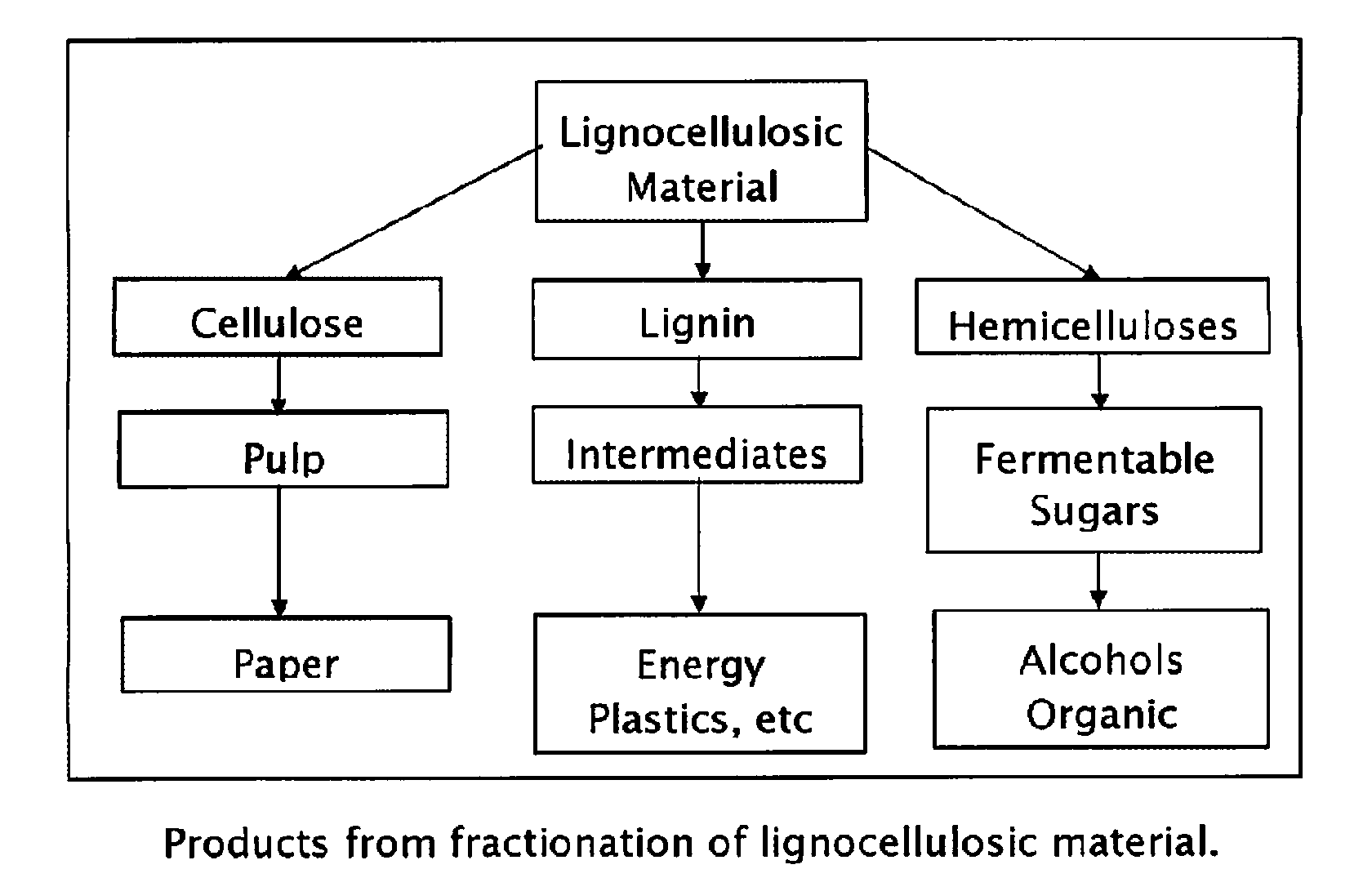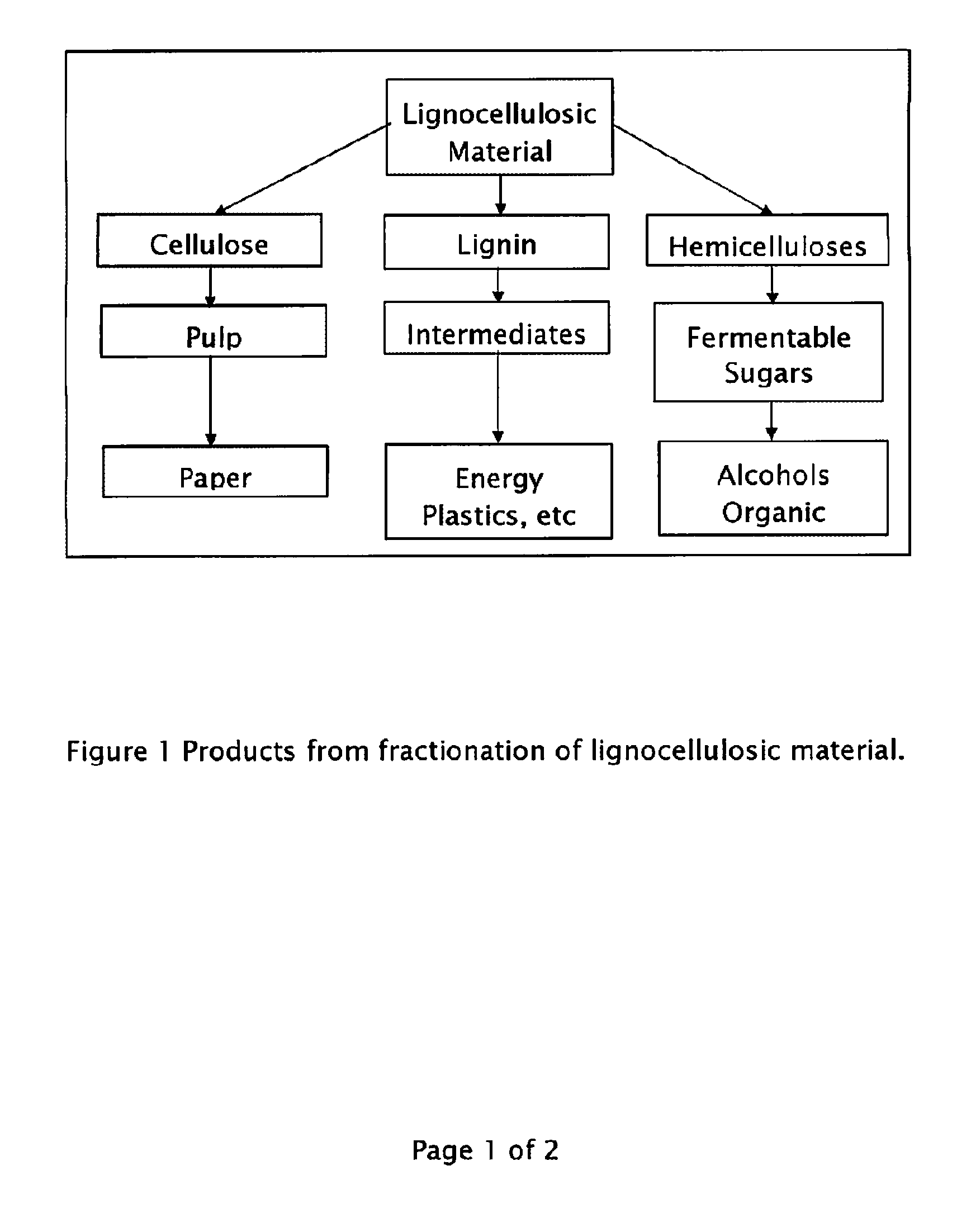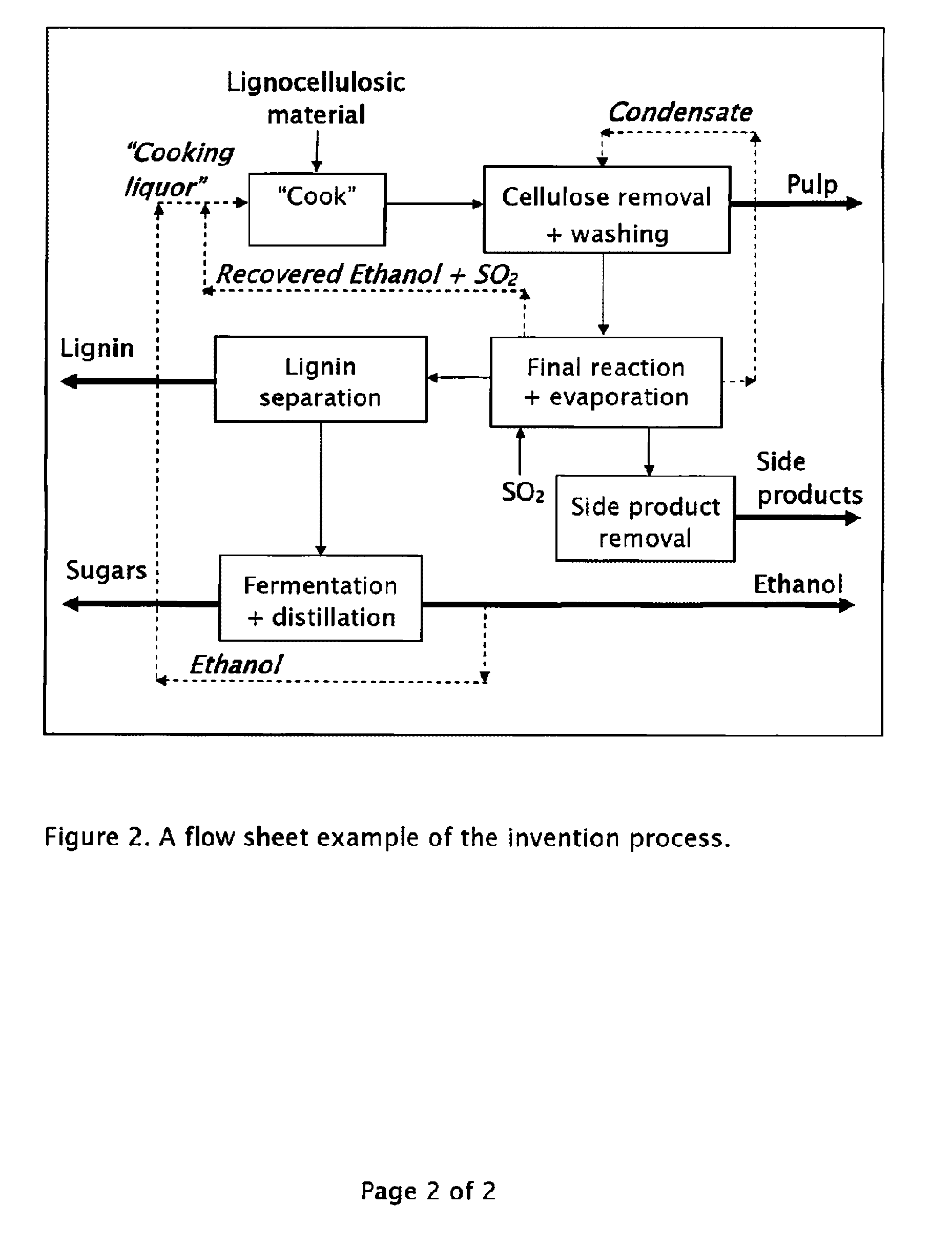Method for the production of fermentable sugars and cellulose from lignocellulosic material
a technology of lignocellulosic material and cellulose, which is applied in the production of glucose, biofuels, multi-stage pulping process, etc., can solve the problems of low high chemical loss, and low yield of cellulose, and achieve high yield of ethanol, improve cellulose viscosity, and high yield of fermentable sugars
- Summary
- Abstract
- Description
- Claims
- Application Information
AI Technical Summary
Benefits of technology
Problems solved by technology
Method used
Image
Examples
example 1
[0076]The following example illustrates an aspect of the disclosure but in no way limits it:—
[0077]Wood chips of mixed northern pine species, containing 42.68% moisture, were cooked for 180 minutes at 157° C. in a 1 liter Parr reactor. The moisture adjusted cooking liquor consisted of 3% SO2, 48.5% of ethanol and 48.5% water by weight in 6 parts of total liquor to 1 part of dry wood.
[0078]Cellulose was removed representing 37.1% of the original wood mass.
[0079]The monomer sugars represented 61% of the all sugars in the hydrolyzate as determined by autoclaving the hydrolyzate with 4% H2SO4 in 121° C. for 60 minutes, which converted the remaining sugars in their corresponding monomers.
[0080]Half of the hydrolyzate was processed without the final reaction step. Calcium oxide was added to reach pH of 11 in the hydrolyzate and the precipitate containing calcium lignosulfonates was filtered off. The cooking ethanol was distilled off until the boiling point of the distillate reached 100.5°...
example 2
[0088]The following example illustrates one embodiment for producing the advantages of producing stronger pulp in ammonia, ethanol water and sulfur dioxide from softwood, but in no way limits it:—
[0089]200 oven dry grams of Red pine wood chips containing 10.5% moisture were screened between ½″ and 2″ sieves. The moisture adjusted cooking liquor was prepared consisting of 15% SO2, 42.5% of ethanol and 42.5% water by weight in 6 parts of total liquor to 1 part of dry wood by weight. A 2-liter Parr reactor contents were heated up to 150° C. and held for ten minutes at the temperature.
[0090]Pulp was washed with 50 vol-% aqueous ethanol and defiberized in a mixer to represent 47.2% of the original wood mass. The screening of the pulp produced 0.8% of rejects on original wood. The lignin free pulp yield was 45.0% as calculate from Kappa number of 30.5. Therefore, the final screened lignin free pulp yield was 44.2%. The intrinsic viscosity was measured using TAPPI standard procedure to 862...
example 3
[0094]The following example illustrates one embodiment but in no way limits it:—
[0095]Several batches of green southern pine wood chips were cooked in a lab digester with nominal capacity of 10 liter at or below 150° C. for less than one hour. The moisture adjusted cooking liquor consisted of 12-18% SO2 by weight dissolved in 50 / 50 of ethanol water mixture. The liquor volume was approximately 6 parts of total liquor to 1 part of dry wood. Cellulose was removed after pulping representing 45-50% of the original wood mass. The wash water was mixed and evaporated in a rotary vacuum evaporator at 45-90° C., until liquor volume the ethanol undetectable. The resulting hydrolyzate, containing approximately was cooled in the cold room (4° C.) to room. No settling of suspended solids was observed after several days. The liquor was subjected to three treatments.
[0096]First portion (01) of the liquor was adjusted to pH 1 using concentrated sulfuric acid. The liquor was heated to 120° C. for one...
PUM
| Property | Measurement | Unit |
|---|---|---|
| Temperature | aaaaa | aaaaa |
| Temperature | aaaaa | aaaaa |
| Temperature | aaaaa | aaaaa |
Abstract
Description
Claims
Application Information
 Login to View More
Login to View More - R&D
- Intellectual Property
- Life Sciences
- Materials
- Tech Scout
- Unparalleled Data Quality
- Higher Quality Content
- 60% Fewer Hallucinations
Browse by: Latest US Patents, China's latest patents, Technical Efficacy Thesaurus, Application Domain, Technology Topic, Popular Technical Reports.
© 2025 PatSnap. All rights reserved.Legal|Privacy policy|Modern Slavery Act Transparency Statement|Sitemap|About US| Contact US: help@patsnap.com



